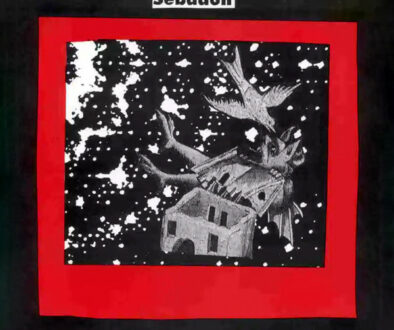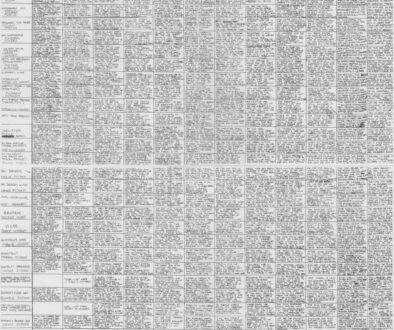Today I Stop Being Real (Book Three, Part 57: V for Vendetta at DC)
Previously in The Last War in Albion: The entire Grant Morrison half of the book happened.
“Today I stop being real. No one’s going to listen to a boy genius. No one’s going to listen to a philosopher or a traveler. No one cares about an orphan, or a rich man, or some grown up grinder kid from Heavenside. All the things I’ve been: no one’s ever been interested. Weird little Johnny from the big house on Scartop; who ever really gave a shit? People like listening to characters. Characters are safe, because they’re not real.” – Warren Ellis, Doktor Sleepless

And what of their opponent, the self-exiled king? At first, a settling of accounts—the tying off of old obligations, so that the first phase of his career could be buried in full. Mostly this meant the completion of V for Vendetta for DC. This was not going back to the absolute start of his career, but it was close—the strip had begun serialization in the March 1982 debut issue of Warrior, at a time when Moore’s other work was The Stars My Degradation, occasional Future Shocks, and a couple Star Wars backups—before even Skizz or Captain Britain, so far back that it was able to influence the tail end of Morrison’s Captain Clyde run. The double header of Marvelman and V for Vendetta in Warrior were where Moore had revealed himself to be more than just the clever writer of things like the Abelard Snazz stories or “Tlotny Throws a Shape”—one capable of serious, penetrating work. It had been the first time Alan Moore’s public persona made an appearance—the first time he was not merely a name in the credits that, to a particularly attentive reader, might signify a basic level of quality that other writers lacked, but an auteur to be actively paid attention to—a creator of major projects who might plausibly serve as the sole reason someone picked up a comic. Warrior #1 began a coherent sense of a career that extended forward to the vast edifice of Watchmen. Now, in that project’s totemic wreckage, Moore returned to the beginning to draw the curtain down on the first phase of his career.
This was fitting. What remained to write of V for Vendetta, after all, concerned the final fate both of the visionary terrorist V and of his schemes to bring down the fascist Norsefire regime. Moore was perhaps less a visionary terrorist at this stage than a visionary artist, or, perhaps, a visionary con man, but Moore was also not the sort to get hung up on the fine distinctions between these three classes. But Moore was someone who would, in some strange cousin to self-effacement, describe himself (or at least his female author-insert character Alma Warren) as “a super-villainess” who “sits in a swivel chair amongst the shifting screens and contemplates deranged agendas. These include affecting the development of culture by the subtle introduction of extreme ideas, which, if pursued, will almost certainly precipitate widespread apocalyptic psychological collapse,” and how he chose to resolve the story of V would have obvious parallels for his own story, especially in the still pulsatingly magical aftermath of Watchmen.

Under DC, V for Vendetta came out in ten thirty-six page issues, ad-free and priced at $2.00—the same basic format as Watchmen, only fifty cents more expensive. It began, in a real sense, with the end: a one page introduction by Moore dated to March 1988—likely the last thing he wrote for DC. This begins by contextualizing the series—explaining that he began it in the summer of 1981, finishing it in early 1988, and disclaiming the awkwardness of the beginning, explaining that “it was for the best to show the early episodes unrevised, warts and all, rather than go back and eradicate all trace of youthful creative inexperience.” He goes on to disclaim the work’s political naïveté, acknowledging that a nuclear war is probably not survivable for the human race, and he idea “that it would take something as melodramatic as a near-miss nuclear conflict to nudge England towards fascism.”

It is the end of his intro, however, that most stands out—a haunting paragraph where Moore notes that “It’s 1988 now. Margaret Thatcher is entering her third term of office and talking confidently of an unbroken Conservative leadership well into the next century. My youngest daughter is seven and the tabloid press are circulating the idea of concentration camps for persons with AIDS. The new riot police wear black visors, as do their horses, and their vans have rotating video cameras mounted on top. The government has expressed a desire to eradicate homosexuality, even as an abstract concept, and one can only speculate as to which minority will be the next legislated against. I’m thinking of taking my family and getting out of this country soon, sometime over the next couple of years. It’s cold and it’s mean-spirited and I don’t like it here anymore.” This, obviously, did not happen—the collapse of Moore’s marriage obviated the most pressing need, which was that his polyamorous relationship with his wife and Deborah Delano was exactly the sort of thing threatened by Clause 28. Still, the fact that Moore was even considering such a thing is striking, and speaks volumes about how unsettled he felt in the period.

Moore’s claim that the early chapters of V for Vendetta ran unaltered was not, strictly speaking, true. In Warrior, the comic had been run in black and white, and Lloyd’s art had been tailored towards that, using stark contrast between white and black with no use of halftones and minimal use of shading. His panel compositions made frequent use of implied lines and stark compositions. DC, however, wished to publish the work in color, which necessitated having the work colorized, which was primarily done by Steve Whitaker and Siobhan Dodds. They approached this with a light touch, using a soft, pastel-dominated color scheme, with Dodds using watercolor and Whitaker using an ink wash.

The result was visually distinctive and looked like nothing else on the stands. Nevertheless, the effect was generally to reduce the impact of Lloyd’s artistic choices. The biggest issues came around Lloyd’s use of implied lines, which tended to disappear in the face of coloring that increased the distinction between adjacent regions of white. But Lloyd’s starkest compositions are also routinely softened as well, with characters he drew in sharp relief looking perilously ordinary. If nothing else, this undermined the dichotomy between the story and the art that Moore described so sharply when noting how “Dave Lloyd was using this stark chiaroscuro style where you’d got no bordering outlines on the characters, you’d got hard black up against hard white in the artwork, whereas in the story, in the text there was almost nothing but shades of grey.” In DC’s version, V was just another superhero—a more literary one, certainly, with a unique visual style, but a superhero all the same, and thus positioned as the valiant moral center of the narrative.

This made especial sense for where the Warrior iteration of the comic had left off—with the disquieting revelation that V had been responsible for Evey’s captivity and torture, a moment that pushed V far out of the realm of sympathetic protagonist, especially given that the comic held on the reveal for nearly five years. In DC’s version, however, this beat was followed immediately within issue #7 by Evey’s rooftop apotheosis and her clear forgiveness of V for what he did, allowing him to remain straightforward and sympathetic in a way that Moore’s original plotting, with its “as monthly as Dez Skinn could manage” release schedule, would not have made quite so easy. Had the last two parts of Book Two come in the format originally intended, readers would have been forced to spend the entire “Values” installment with Evey’s shock, betrayal, and anguish, ending on the ambiguous cliffhanger of “V telling her to “become transfixed… become transfigured… forever,” this final word delivered in a stark wide shot, Evey a white silhouette across a black night punctured only by a few slits of white rain. Instead the image has a blue wash across it, with light and dark spots within the rain, and, more to the point, plows immediately into “Vignettes,” the final part of Book Two, whose short, discrete, and elliptic scenes do not sit as a series of teases but rather as a couple of scenes interspersed with yet more of V and Evey, two characters the reader has been seeing all issue. (Making it worse, issue #7 was where DC decided to burn off the “Vertigo” and “Vincent” interstitial installments from Warrior #5 and #20 respectively, further burying these dramatic moments in a sense of business as usual—a pair of side stories in which V serves as a heroic trickster figure instead of as the intriguing but horrifying manipulator Moore was writing him as at the end of Book Two.

The bulk of work for completing V for Vendetta, however, came in the composition of Book Three, “The Land of Do-As-You-Please.” In most regards, this continued as it had been, with little overt or obvious change from the first two volumes. Moore still wrote in short, discrete chapters instead of restructuring for full issues, Lloyd continued to work in a stark, high contrast style. The goal, it was clear, was to finish the comic that had been started in Warrior, as opposed to any sort of fundamental transformation of the project. But this veneer of similarity masked subtler changes. Lloyd’s art, for instance, made slightly less frequent use of the implied line, turning to it occasionally, for scenes that were emotionally suited to the distance that would result when Whitaker and Dodds gave them a reduced and monochrome color palate to highlight the effect, but otherwise working with denser linework and more clearly delineated objects to make the color work more straightforwardly.
On Moore’s end, meanwhile, the page length of the chapters became slightly more variable—after being locked in at precisely six page chapters for most of Book Two, Book Three hovers around seven pages, but varies a little while still being sure to come out twenty-eight pages per issue. There’s also a sense of Moore writing for the cliffhanger, so that the chapters that end issues conclude on satisfying beats. V for Vendetta #8, for instance, closes on Adam Susan staring, horrified, as V’s logo appears on the screen of Fate whilst V symbolically knocks down a bunch of dominoes in the Shadow Gallery, while issue #9 ends with Eric Finch realizing that he’s mortally wounded V—both big, dramatic beats that work especially well as issue cliffhangers. Indeed, issue #9 shows evidence of a larger structure, starting off with Finch exploring the ruins of Larkhill , such that the end beat resolves the action of the beginning. These are small changes, to be sure but they’re significant ones, highlighting the degree to which this was not simply the culmination of what Moore and Lloyd originally envisioned in 1981.

More substantial and yet more subtle are the tonal changes to how Moore wrote the strip. Even over the course of Book One and especially Book Two, Moore was growing in confidence, tempering the brash and direct bravado of those early career-making installments with a newfound capacity for more oblique or quiet storytelling. In Book Three, as a writer with nothing to prove to anyone, he fully embraced this. Even as plot events hurtled towards a spectacular and (quite literally) explosive climax, Moore grew more fond of understatement, of working the details. He was no less impressive, nor less interested in making sure the reader recognized and appreciated his impressiveness. But where in 1981 he aimed for a populist sort of impressiveness, dazzling people with the raw cleverness and incisiveness of the premise he and Lloyd had concocted and the sheer audacity of a terrorist hero who blew up the Houses of Parliament as an opening act, by 1988 he was more limited in who he wanted to impress, restricting himself to careful and invested readers who would appreciate the fine details of his craft. No longer working in broad strokes and ostentatious formalist conceits, Moore’s late V for Vendetta work focused on things like offering rich characterization of the secondary cast or doing symbolically dense, allusive scenes.

The zenith of this comes in the “Vestices” chapter that kicked off issue #9 of the DC series. In it, Eric Finch visits the ruins of the Larkhill Resettlement Camp, where Valerie and V were imprisoned and experimented on, attempting to understand V and his motivations. His approach to this is, to say the least, idiosyncratic: he takes an unknown quantity of LSD and wanders around Larkhill. This results, predictably, in a series of hallucinations in which Finch confronts both his complicity in the fascist Norsefire regime and V’s history. This culminates with him imagining himself within Room 5, where V was created, looking at the patterns of chemicals on the floor that V ultimately used to build a bomb. “How did I get here,” he asks himself, “to this stinking place: my job, my life: my conscience: my prison.” And then, staring at the patterns on the floor, he finally realizes. “Who imprisoned me here? Who keeps me here? Who can release me? Who’s controlling and constraining my life, except… me?” And with this final revelation, the room catches fire, the camp explodes around him, and he realizes, in his own version of V and Every’s horrified apotheosises, that he’s free. It’s a tightly composed, densely symbolic installment of the comic, quiet and profound, and firmly reliant on Moore and his confidence in Lloyd’s technical skill—the work of a writer who is past trying to prove himself and is instead utterly secure in the knowledge that he can do as he pleases and an audience will follow him.





January 3, 2023 @ 11:19 am
Figure 1608 is so weird. Like, it comes so close to doing what figure 1611 does; Evey’s face is almost the same shade as the brickwork, and that must be a deliberate choice. And then she’s given those rosy cheeks to clearly delineate exactly what the linework doesn’t.